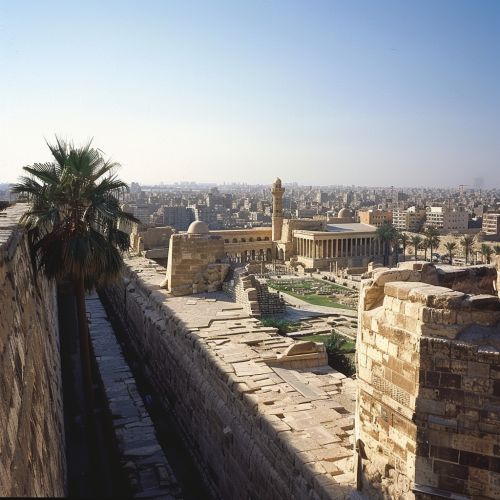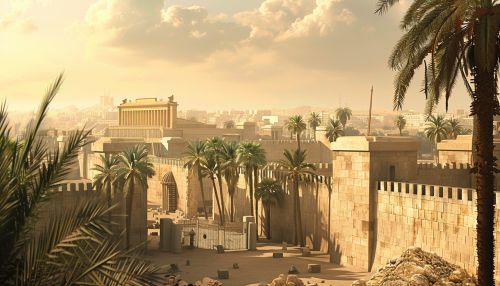Library of Alexandria
Origins and Construction
The Library of Alexandria was one of the largest and most significant libraries of the ancient world. It was dedicated to the Muses, the nine goddesses of the arts in Greek mythology, and was part of a larger research institution known as the Museum of Alexandria. The library was created by Ptolemy I Soter, a Macedonian general and the successor of Alexander the Great. However, it was during the reign of his son, Ptolemy II Philadelphus, that the library was expanded and developed into a renowned center for learning and research.


The construction of the Library of Alexandria was a monumental task. It was built in the royal district of Bruchion and was designed to house hundreds of thousands of scrolls. The library was made up of several buildings, with the main library (also known as the "Mother Library") being the largest. The buildings were adorned with beautiful gardens, dining rooms, meeting rooms, and lecture halls, creating an environment conducive to intellectual pursuits.
Collection and Organization
The Library of Alexandria was renowned for its vast collection of scrolls, which were estimated to number between 40,000 to 400,000 at its peak. These scrolls contained works on a wide range of subjects, including literature, science, philosophy, and more. The library aimed to collect all the world's knowledge and, as such, had an acquisitions department that was tasked with obtaining texts. This was done through various means, including copying original texts, purchasing, and sometimes more underhanded methods such as confiscating texts from ships that docked in Alexandria.
The scrolls in the library were organized according to the subject matter and were stored in different rooms for easy access. Each scroll had a tag attached to it, indicating its subject matter and the author's name. This system of organization made it easier for scholars to find the texts they needed for their research.
Scholars and Discoveries
The Library of Alexandria attracted scholars from all over the ancient world. These scholars were given the freedom to pursue their research and were provided with the necessary resources and support. Some of the most notable scholars who worked at the library include Euclid, the father of geometry; Eratosthenes, who calculated the Earth's circumference; and Hipparchus, who created the first comprehensive star catalog.
These scholars made significant contributions to various fields of knowledge. For instance, Euclid's work at the library led to the development of Euclidean geometry, which is still taught in schools today. Eratosthenes' calculation of the Earth's circumference was remarkably accurate, considering the tools available at the time. Hipparchus' star catalog was the first of its kind and laid the foundation for future astronomical research.
Destruction
The destruction of the Library of Alexandria is a topic of much debate among historians. It is generally agreed that the library suffered multiple incidents of damage and destruction over several centuries. The most notable incidents include a fire during Julius Caesar's civil war in 48 BC, the attack by Emperor Aurelian in the 3rd century AD, and the decree by Theophilus, the Patriarch of Alexandria, in 391 AD.
By the time of the Arab conquest of Egypt in 642 AD, the Library of Alexandria had likely ceased to exist, having been destroyed or decayed over time. However, the exact circumstances and timeline of its destruction remain a mystery.
Legacy
Despite its destruction, the Library of Alexandria left a lasting legacy and continues to be a symbol of knowledge and culture. It played a crucial role in preserving and advancing knowledge during its existence. The library's ambitious goal of collecting all the world's knowledge set a precedent for future libraries and research institutions.
Today, the idea of the Library of Alexandria lives on in the Bibliotheca Alexandrina, a modern library and cultural center built near the presumed original site of the Library of Alexandria. This new library aims to recapture the spirit of the original library and serves as a reminder of the importance of knowledge and learning.
